 Image search results - "kitamachi" Image search results - "kitamachi" |
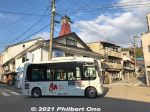
Area along Kodara River is within the Kitamachi (northern) part of Gujo-Hachiman. Part of the castle town at the foot of the castle mountain.
|
|
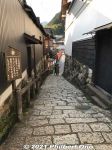
Small alley to Sogisui natural spring. The Kitamachi area of Gujo-Hachiman is also a National Important Traditional Townscape Preservation District (重要伝統的建造物群保存地区).
|
|
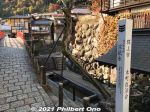
On the right is Sogi natural spring, named after poet Sogi who bid farewell here to the castle lord after visiting Gujo in the 15th century.
|
|
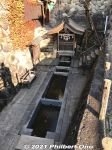
Sogisui natural spring, one of Japan's 100 Famous Natural Springs. 宗祇水
|
|
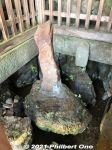
Sogi Spring in Gujo-Hachiman.
|
|
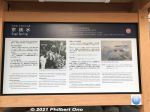
About Sogi-sui Spring.
|
|
|
|
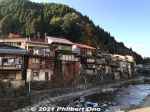
Homes along Kodara River.
|
|
|
|
|
|
|
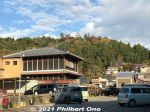
Gujo-Hachiman Castle seen from the street.
|
|
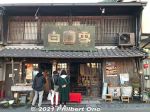
Sake shop in a traditional building in a neighborhood called Kajiya-machi
|
|
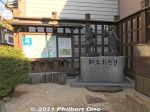
Kikoku Guardhouse site now has a Gujo Odori monument.
|
|
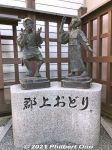
Gujo Odori monument.
|
|
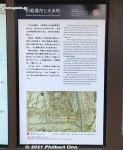
About the Kikoku Guardhouse.
|
|
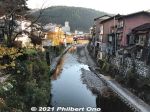
Kodara River looking downstream.
|
|
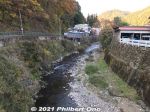
Kodara River upstream.
|
|
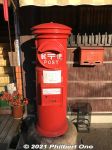
Old-style mailbox.
|
|

Traditional townscape along a neighborhood called Kajiya-machi where the town's craftsmen lived and worked. 鍛冶屋町
|
|
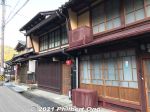
Red water bucket to put out fires.
|
|
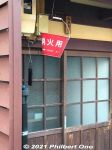
Red water bucket to put out fires.
|
|
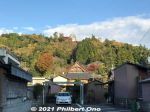
Gujo-Hachiman Castle seen from the street.
|
|
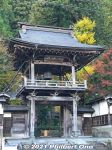
Daijoji Temple gate and bell tower (built in 1803) along Kodara River.
|
|

Daijoji Temple gate and bell tower in autumn.
|
|
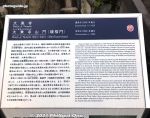
About Daijoji Temple, built in 1603.
|
|
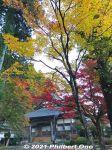
Daijoji Temple in autumn. 大乗寺
|
|
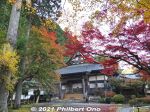
Daijoji Temple in autumn. 大乗寺
|
|
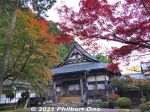
Daijoji Temple in autumn. 大乗寺
|
|

Daijoji Temple in autumn. 大乗寺
|
|

Daijoji Temple in autumn. 大乗寺
|
|
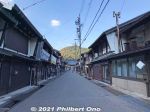
Traditional townscape along a neighborhood called Shokunin-machi where the town's craftsmen lived and worked. 職人町
|
|
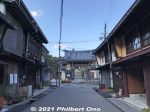
Neighborhood called Shokunin-machi leading to Chokyoji Temple.
|
|

Gate to Chokyoji Temple. 長敬寺
|
|
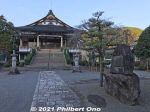
Chokyoji Temple in Gujo-Hachiman. Family temple for the Endo Clan, castle lords. 長敬寺
|
|

Chokyoji has a connection with the Ryosotai Battalion formed by former samurai of Gujo domain. They fought against Imperial forces in 1868 at Aizu Wakamatsu. 凌霜隊
|
|
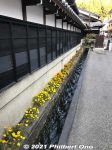
Gutter along the temple's wall.
|
|

The 16th Kitamachi Awa Odori was held on July 26, 2008 from 6 pm to 8:30 pm. Kitamachi is a small neighborhood near Tobu-Nerima Station on the Tobu Tojo Line.
|
|

They danced on the main shopping streets called Kitamachi shotengai (pictured here) and New Kitamachi shotengai. Just few minutes walk from the train station. きたまち商店街
|
|

After a few speeches and a "tape-cut" ceremony, the festival began at 6:30 pm.
|
|

Twenty-three dancing and non-dancing troupes participated. This is somewhat small compared to bigger Awa Odori dances in Tokyo, but the enjoyment and enthusiasm of the dancers and crowd were top-class.
|
|

One group was from the local junior high school.
|
|

There were about 1,400 dancers and about 70,000 spectators lining the streets.
|
|
|

Junior high school dancers dressed in yukata.
|
|

School baseball team, Kitamachi Faiyers. No dancing.
|
|
|
|
|
|
|
|
|
|

Would you believe a karate group? They did not dance. Just punched and yelled their way through. Kitamachi Awa Odori, Nerima, Tokyo 極真空手連
|
|

I much prefer the women dancers.
|
|

So photogenic, like a crane in flight.
|
|
|
|

Daikon-ren from Nerima-ku.
|
|
|
|

These kids were very good at the taiko drums.
|
|
|
|
|
|
|
|
|
|
|
|
|
|
|
|

Dancing in formation.
|
|
|

Aoi Shin-ren, one of my favorite Awa Odori troupes. 葵新連
|
|
|
|
|
|
|
|
|
|
|

Kitamachi Awa Odori, Tokyo 写楽連
|
|

Kitamachi Awa Odori, Tokyo
|
|
|
|

Takara-bune-ren 宝船連
|
|

She loved to pose for photographers.
|
|
|
|
|

They were hoppin'
|
|
|
|

Awa Odori dancer
|
|

All the dancers' faces were glistening with perspiration.
|
|

Kitamachi Awa Odori, Nerima-ku, Tokyo
|
|
|

Kitamachi Awa Odori Dance, Nerima-ku, Tokyo きたまち阿波おどり
|
|

Nice formation.
|
|
|

They know how to look good.
|
|

For the last number, the finale.
|
|

Quite spectacular finale performance by this troupe called Hyottoko-ren. ひょっとこ連
|
|
|
|
|
|
|
|
|
|
|
|